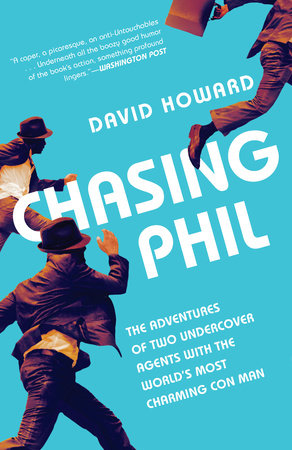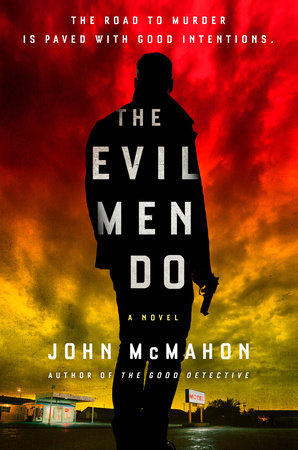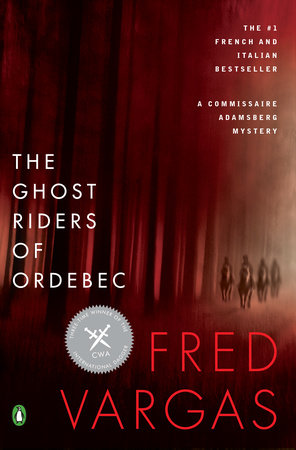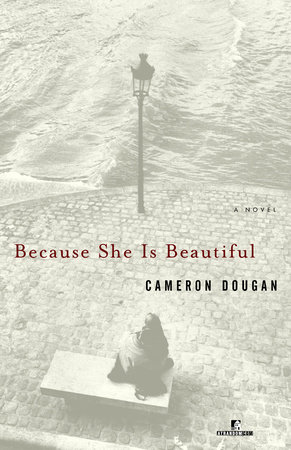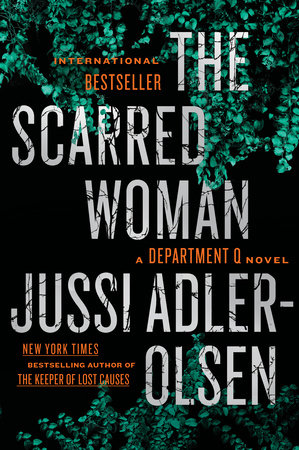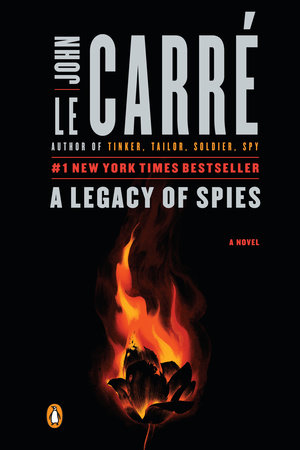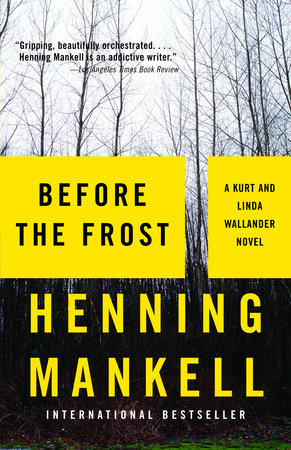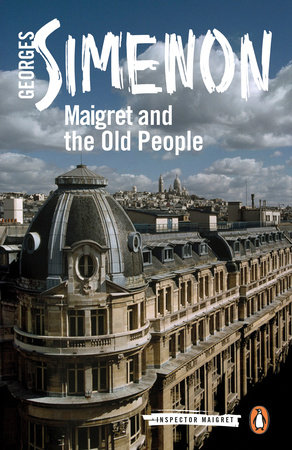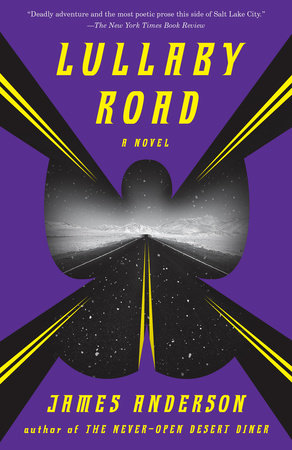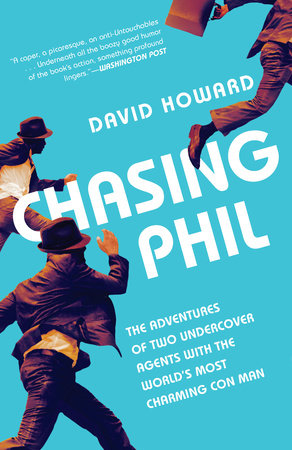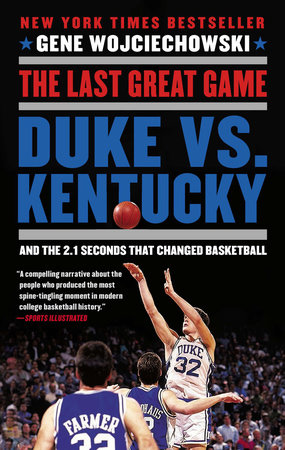Author Q&A
Q. Chasing Phil is the jet-setting true story of two young undercover agents who, against all odds, brought down a multimillion-dollar crime syndicate known as the Fraternity. How did you first encounter this episode in FBI history, and what compelled you to tell this fascinating story?
A. My first book, about a stolen artifact, included an FBI sting, which put me in touch with some people connected to the bureau. One of them sent me an email address for Myron Fuller, whose undercover work had helped start the Abscam investigation in the late 1970s. Myron and I talked on the phone a couple of times, then we met in New York in 2014. He told riveting stories, and it seemed like there might be a book in them somewhere, but I wasn’t sure where it was all going. The tale was quite sprawling, and parts had already been incorporated into the movie American Hustle. But then at one point he said, “You know, it all started with two young agents out in Indiana who spent a year traveling with a con man.”
I stopped him and said, “Wait. Say that again.” I cringe a little saying this, but the instant those words came out of his mouth, I knew that that was my book.
The more I dug, the more enamored I became. The ’70s, the globe-trotting, the tension, the big, vibrant characters, the highly creative financial fraud, the turning point for the FBI . . . and the intense connection that grew between the two agents and Phil blew my mind. I love that it’s a true-crime story that, ultimately, is a story about friendship.
Q. Throughout their yearlong adventure as criminal protégés, J.J. Wedick and Jack Brennan had a number of close calls in which their true identities were on the verge of being revealed. They had no prior undercover experience and improvised their way through their mission, and a couple of times defied direct orders. What were they risking, both with their bosses and with their investigation’s targets?
A. They were risking an awful lot. It bears repeating that not only did they have zero undercover experience, they had no training in undercover work, and they used their real identities, even their personal credit cards. It’s totally unheard of, and it speaks to how no one was ready for it: not them, not the bureau, and not the con men they investigated.
The stakes grew exponentially higher the deeper they got. Their reputations within the bureau were on the line. The FBI was spending a huge amount of money flying them around with Phil, and on additional manpower and travel for the support team. If it blew up, it was on J.J. and Jack. Then, as they encountered organized-crime characters in the summer of 1977, dead bodies were turning up around the mobsters they spending time with. If their real identities were discovered, they could have ended up floating in the Bronx River. And Jack had two young boys and a third on the way; he had also recently gone through a separation in his marriage—and this job required him to be gone for weeks at a time without being able to explain what he was doing.
I’m in awe of both of those guys. After J.J.’s wife, also a retired FBI agent, read the book, she told him, “I can’t believe what you guys had to deal with.” She hadn’t known him then and never fully grasped the complexities of the mission.
Q. Operation Fountain Pen was the FBI’s first wire-wearing sting to target white-collar crime. How did this particular sting fit in with the FBI’s work prior? How did it change the bureau’s trajectory?
A. The FBI was just getting into undercover work. The bureau abandoned it under J. Edgar Hoover, who died in 1972. He considered white-collar crime someone else’s problem. But by 1975, some agents had started working on simple cases where they posed as a buyer for fenced goods. That was a one-day thing, in and out. And a few people, like Joe Pistone (aka Donnie Brasco), were on long-term operations infiltrating organized crime, but almost no one in the entire FBI knew about those guys, for their safety.
There was no precedent for what Jack and J.J. were doing. The bureau named the Kitzer investigation Major Case Number One, and after Jack and J.J. financial fraud became more of a priority. Now the bureau regularly investigates these sorts of crimes.
Q. There’s been a spotlight on the FBI in recent months, as people debate the role of the organization and its director. Historically, how has the public’s relationship with the FBI shifted over time? What was it like when J.J. and Jack were undercover with Phil?
A. The bureau was struggling then in terms of public perception. There was this steady patter of revelations during the latter half of the ’70s about the FBI’s involvement in Nixon’s clandestine, extralegal activities. It was kind of shocking in those days that agents’ activities were trickling into the political realm; its traditional role was to pursue violent crime and property theft.
Now it’s obviously more common for the bureau to be involved in all kinds of investigations, including some of the controversial events of the last eighteen months. The guys I’ve spent a lot of time with feel things have changed a lot.
Q. Chasing Phil required years of extensive research. Can you share your process?
A. There were two major pieces. At the outset I met Jack, Jim (he no longer goes by J.J.), and Myron in Park City, Utah, and they spent three days telling stories, jogging one another’s memories. I recorded everything, then spent the next two-plus years talking to them more or less nonstop. Because of the way memory works, stories bubbled to the surface unbidden at times, so the interviews continued right up to and past my book deadline. For a while I joked with Jim that I talked to him more than my wife, and it was hardly an exaggeration.
Then there were the court transcripts from the trials that took place in the aftermath of the investigation—thousands of pages of testimony and photos and documents. I spent months working through these, mining them for details and dialogue. And sometimes I would see something mentioned in passing that would prompt me to go back to the agents and say, “What was this about?” And that would spark their memories, and another scene would tumble out. So the story was like a mosaic, where I knew all the dimensions in the beginning but the individual pieces came over time, organically, even as I was writing and rewriting. That was challenging at times, because I sometimes had to rework a section, but it was also exciting. The story kept getting richer and more detailed.
Q. What was your most exciting discovery?
A. One day I was reading a story from 1978 in the Kansas City Times about one of the trials, and it included a line about how many conversations and events Phil was able to recall in his testimony.
I thought, Whoa. I hadn’t yet pursued the trial research, but the one thing I was missing at that point Kitzer’s way of speaking—how he strung words together—which was a big part of what made him so successful. After reading that article I called the federal courthouse in Kansas City, and a clerk told me that the trial papers were housed in the National Archives facility just outside the city. I booked a flight, and when I got there, they brought out these giant folders. Inside were hundreds of pages with testimony from Phil, Fred Pro, the FBI agents, and others. The witnesses told lengthy stories and recounted conversations, which allowed me to “hear” how they spoke. It was the kind of moment that writers of historical nonfiction dream about. The “Hallelujah” chorus breaks out inside your head.
I found more trial transcripts at National Archives branches in Atlanta, Chicago, and San Francisco, and in the state courthouse in Orange County, California. I’d never been so happy to rack up frequent-flyer miles.
Q. What was the biggest challenge?
A. Trying to describe what Kitzer and his co-conspirators were doing in their schemes was a heavy lift. It was so intricate, and it required familiarity with banking and financial instruments. In one transcript, from a federal trial in Louisville, I found that Jack had spent a bunch of time on the witness stand trying to explain something called a two-for-one deal that the promoters had discussed in Frankfurt—a scheme that involved simultaneously manipulating securities on two continents. After he went through it about six different ways, you could tell that the entire courtroom was still baffled. After reading that I thought, You know, maybe I’ll just mention this one in passing.
I’m one of those people who can’t get motivated to balance my checkbook, so it was a chore not only to understand what they were doing, but to write it in a way that readers would find meaningful. I read whatever books I could find that succeeded with that sort of thing—I have a heavily dog-eared copy of The Big Short—and reworked the passages that describe Phil’s schemes many, many times.
Q. Phil operated on the margins of legitimacy, and he believed that he could game the criminal justice system in his favor. Are there modern parallels to Phil’s strategy? Or lessons to be gleaned from his story?
A. There are tons of parallels. Phil was the cutting edge in his time, but it boiled down to knowing everything about how sophisticated financial systems and instruments worked and taking advantage of that expertise. You can draw a straight line from him to the housing collapse in 2008, where brokers were selling mortgages that they knew people couldn’t repay. You can connect dots to the unethical—like the rogue traders, or Wells Fargo bankers creating phony accounts—and to the blatantly criminal, such as the Enron folks and Bernie Madoff.
Also, Phil had this well-developed concept of how to beat the criminal justice system, and that’s true now more than ever in the white-collar realm. Now they just buy the most expensive lawyers and mow the government down.
Q. Film rights to Chasing Phil were preempted by Warner Brothers on behalf of Robert Downey Jr., who intends to produce and star in a movie adaptation. These kinds of stories are ripe for Hollywood, and your book already has such a cinematic quality. Did any films in the genre help inspire your writing? What are you most excited to see portrayed on the screen?
A. I actually avoided watching any movies about cons. I didn’t want to be influenced by anything that had been done before. But I’m looking forward the screen adaptation; the idea of Downey playing Phil has always struck me as almost eerily perfect. He has the same fluidity with language, the same high-revving motor, the bulldozer charisma. It should be amazing.
